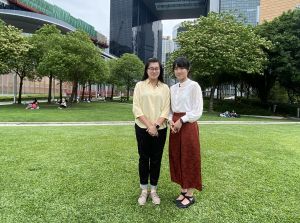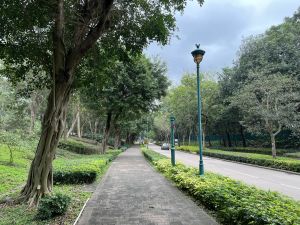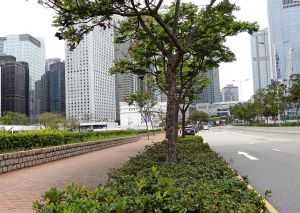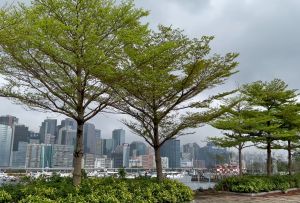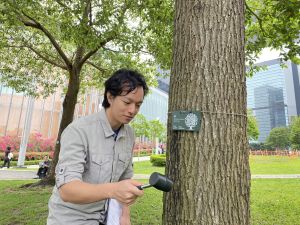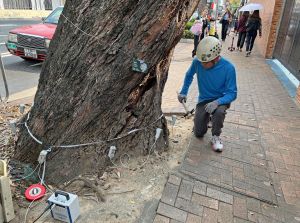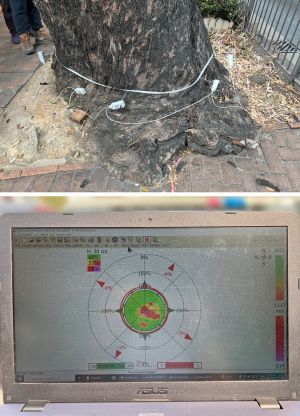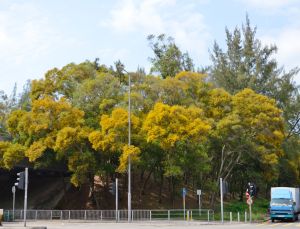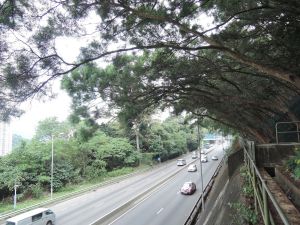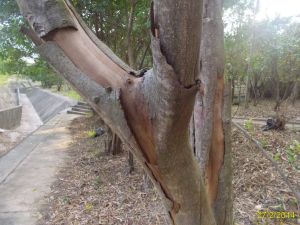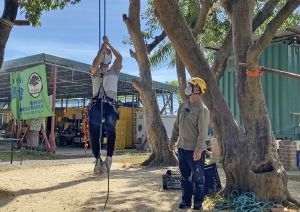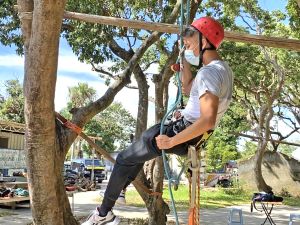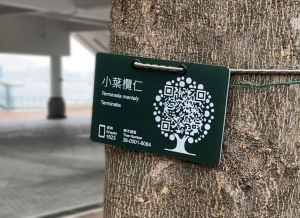Tree Planting and Maintenance
|
Trees are important elements of a liveable city. Apart from providing comfortable shade and visually attractive landscapes, trees can also help lower temperature and improve air quality. Recently, the Development Bureau (DEVB) reviewed the existing tree management arrangement and put forward 10 enhancement measures for the planting and maintenance of roadside trees. I have invited colleagues from the Greening, Landscape and Tree Management Section (GLTMS) to share with us some of the key measures. Formulating new guidelines for minimum soil volume and soil depth for tree planting Roadside trees not only enhance the aesthetic quality of streets and provide shade for pedestrians, they also act as buffer zones between carriageways and pedestrian walkways and filter pollutants from vehicles. Therefore, many international cities have adopted this arrangement for tree planting along their boulevards. Landscape Architect (Greening and Landscape) of the GLTMS of the DEVB, Miss Vanessa SIY, says that tree roots can grow healthily if the space is sufficient, which in turn make the trees more resistant to wind. In fact, as early as 2012, the DEVB already promulgated a set of new standards stipulating that planting zones of about two metres minimum in width and free of underground utilities have to be reserved for all new road projects. During the year, we are going to formulate new guidelines on the requirements for soil volume and soil depth provision for new tree planting. “Right Tree, Right Place” We have been advocating the principle of "Right Tree, Right Place" in the planning of planting proposal. Apart from fulfilling design requirements, trees selected have to suit the environment. For coastal areas, selected plants should be wind and salt-tolerant, such as Terminalia mantaly. For planting in narrow streets, smaller tree species will be selected. Also, to make our streets more vibrant, trees with colourful flowers and unique features will be selected. Planting suitable native plant species to increase biodiversity Other than tree planting, tree care and systematic tree risk assessment are also among the 10 enhancement measures to reduce the risk of tree failure, in order to enhance public safety. Tree Management Officer of the GLTMS, Ms LEUNG Tsz-yan, Flora, tells us that during the early stage of afforestation in Hong Kong, some exotic tree species, such as Acacia confusa, were introduced to prevent soil erosion. Although Acacia confusa can enhance slope stability, their potential safety threats also increase as they age. To enhance public safety and increase biodiversity, tree management departments have to implement timely enhancement measures by replacing them with appropriate native plants. More extensive use of technology in tree management During routine tree inspection, apart from conducting visual tree assessment and the use of common tools, tree management departments also carry out in-depth investigation using equipment such as resistograph and tomograph to check the internal conditions of trees if necessary. Meanwhile, we are conducting trials on the use of sonic device to ascertain the extent of tree roots, which could be used for reference in tree risk assessment. Implementing appropriate risk mitigation measures Before the onset of the wet season every year, apart from routine tree maintenance, tree maintenance departments also inspect trees in areas of high pedestrian and vehicular traffic flows and implement necessary mitigation measures in accordance with the “Guidelines for Tree Risk Assessment and Management Arrangement” (Guidelines). Removal of dead branches, pruning, pest and disease control, cabling are examples of the mitigation measures. The Guidelines have been updated to, among others, require departments to adopt more extensive use of technology in tree inspection and management, enhance implementation of risk mitigation measures, and step up the auditing of tree risk assessment reports. We are also gradually extending periodic inspections of trees along roads with high pedestrian and vehicular traffic flows to village roads on unleased and unallocated Government land. Besides, tree labels with QR codes have been installed on 200 000 roadside trees to provide the community with basic tree information and facilitate the reporting of problematic trees. Introducing suitability and sustainability assessment for roadside trees The DEVB is currently arranging a consultancy study to research and establish the criteria for determining the suitability and sustainability of roadside trees having regard to overseas experience. Large trees on roadsides do not pose imminent risk at the moment, however, in view of the continuous urban development, we aim to draw up appropriate improvement measures and follow-up actions for different scenarios so that, in the long run, our trees will have adequate space for growth. Building up capacity of tree management personnel Through the Study Sponsorship Scheme and Trainee Programme under the Urban Forestry Support Fund, we actively seek to uplift the ability of tree management personnel by attracting more new blood to join the tree management industry, as well as encouraging in-service practitioners to pursue further education. Tree management on private land Property owners are responsible for maintaining trees within their properties. The Tree Management Office (TMO) has been actively providing assistance to private property owners. For example, the TMO sends letters to property owners every year to remind them to engage qualified arborists to conduct tree risk assessment and implement necessary mitigation measures. Apart from organising talks and workshops, the TMO has recently enhanced their online content, providing tree care knowledge vividly to the public in the form of animation. The Government has been committed to promoting greening initiatives. Over the past decade, about 5 million trees and over 62 million shrubs and other plants have been planted. We will continue to look for more suitable opportunities to develop a greener environment in Hong Kong and enhance the quality of our living environment sustainably. |
16 April, 2023
Back